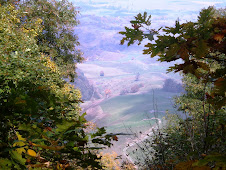
Water is an essential part of your hike. It is one of the heaviest items in your pack because it weighs 8 lbs. per gallon. Lack of proper hydration can be a serious matter on the trail and may lead to dehydration.
Dehydration is the loss of water and salts essential for normal body function. Dehydration occurs when the body loses more fluid than it takes in. This condition can result from illness; a hot, dry climate; prolonged exposure to sun or high temperatures; not drinking enough water; and overuse of diuretics or other medications that increase urination. Dehydration can upset the delicate fluid-salt balance needed to maintain healthy cells and tissues.
Water accounts for about 60% of a man's body weight. It represents about 50% of a woman's weight. Young and middle-aged adults who drink when they're thirsty do not generally have to do anything more to maintain their body's fluid balance. Children need more water because they expend more energy, but most children who drink when they are thirsty get as much water as their systems require.
Age and dehydrationAdults over the age of 60 who drink only when they are thirsty probably get only about 90% of the fluid they need. Developing a habit of drinking only in response to the body's thirst signals raises an older person's risk of becoming dehydrated. Seniors who have relocated to areas where the weather is warmer or dryer than the climate they are accustomed to are even likelier to become dehydrated unless they make it a practice to drink even when they are not thirsty.
Types of dehydration
Mild dehydration is the loss of no more than 5% of the body's fluid. Loss of 5–10% is considered moderate dehydration. Severe dehydration (loss of 10–15% of body fluids) is a life-threatening condition that requires immediate medical care.
Complications of dehydrationWhen the body's fluid supply is severely depleted, hypovolemic shock is likely to occur. This condition, which is also called physical collapse, is characterized by pale, cool, clammy skin; rapid heartbeat; and shallow breathing.
Blood pressure sometimes drops so low it can not be measured, and skin at the knees and elbows may become blotchy. Anxiety, restlessness, and thirst increase. After the patient's temperature reaches 107°F (41.7°C) damage to the brain and other vital organs occurs quickly.
It is very important, while attempting to stay hydrated and that you maintain a pure water source. There are several options for treating 'trail water' so it will be safe to drink. You can pump your water from a natural source while filtering out potential hazards. Tablets are available that kill bacteria while treating creek water. Some units omit ultraviolet (UV-C) light rays that safely sterilize clear water by destroying viruses, bacteria and protozoa including Giardia and Cryptosporidium. You may choose to boil your water to remove foreign bodies.
Failing to properly purify your drinking water can lead to some pretty nasty intestinal complications. One of the more common ailments is Giardia: A genus of protozoa that infect the gastrointestinal tract of some animals, including humans. Giardia have a large sucking disk which permits them to adhere to the intestinal lining. The species that infects humans (and causes diarreah) is Giardia lamblia. Doesn't sound like much fun.
Pardon the pun, but the issue of water boils down to drinking plenty of it while on the trail AND keeping it safe to drink.

No comments:
Post a Comment